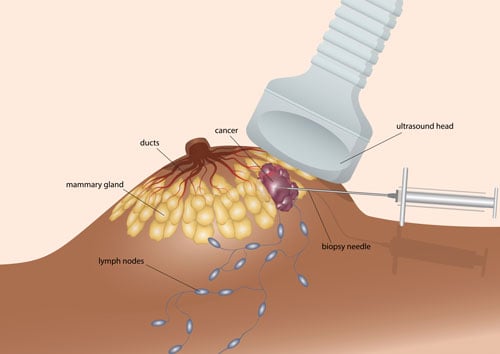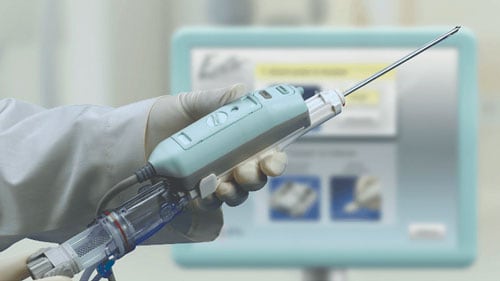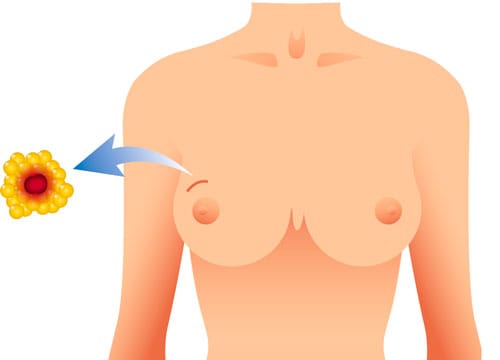
Diagnosis - Breast Biopsies
To further investigate any breast abnormalities (lesions, lumps, calcification or structural distortion) that are detected in the screening procedures, biopsies are sometimes performed to enable the doctor to study the tissue and determine if it is cancerous.
Biopsy Procedures
Why is a breast biopsy performed?
The purpose of a biopsy is to ascertain the nature of a particular lesion by taking some tissue sample from the breast. It will then be sent for further testing and/or observation under the microscope. The amount of tissue required for testing will determine the type(s) of biopsy performed.
Here are the common biopsy procedures:
1. Core Biopsy
A core biopsy makes use of a hollow needle to draw out samples of tissue in the breast. Local anaesthesia will be applied, so there is minimal pain experienced during the procedure. A small incision will be made on the breast before inserting the needle, and this incision will heal in a few days after the procedure.
This is the most common form of biopsy, as it is able to provide conclusive results 95% of the time. However, in certain rare cases, complete removal of the lesion is needed to establish a diagnosis. In this case, an additional biopsy after core biopsy might be performed.

What happens during a core biopsy
2. Vacuum-assisted Biopsy (commonly known as Mammotome)
A vacuum-assisted biopsy is used to remove an entire lesion, through a small incision with a special needle that is connected to a vacuum device. This procedure is sometimes known as Mammotome.
It can only remove lesions up to 15mm in size, in small strips rather than as a whole. While it is minimally-invasive, there might sometimes be bleeding that requires surgical attention.

Vacuum-assisted biopsy
3. Excision Biopsy (aka surgical biopsy)
A surgical biopsy requires excision, and this is therefore performed under general anaesthesia. It is used for certain lesions, sometimes even after core or vacuum-assisted biopsies for further investigation.
To improve the accuracy of the biopsy procedure, biopsies can be done under the guidance of ultrasound, MRI or stereotactic (mammography) imaging to locate the position of the lump.

Surgical biopsy
Your surgeon will recommend the form of biopsy that is most suitable for you after a detailed discussion. There will be certain cases where more than one type of biopsy is required to confirm the results for diagnosis.
Diagnosis FAQs:
My breasts don't have lumps, should I be concerned about breast cancer?
Although breast cancer is commonly associated with a breast lump, it can sometimes present without a lump as well. There could be other signs, such as:
- Nipple discharge (usually bloody)
- Persistent rash over the nipple areolar area
- Inverted nipples
- Redness and skin changes over the breast
If any of these signs are present, it is best checked by a breast cancer surgeon as a precaution. While there could be non-cancerous causes for these signs, it is necessary for an expert to distinguish between the two.
Why is a biopsy necessary after a CT scan?
Scans of any sort, including MRI, can only be accurate to a certain extent. If complete certainty is necessary, a biopsy will be needed as that allows the examination of specific tissue samples.
Do men get breast cancer?
Men can get breast cancer too. This is obviously rare, and accounts for about 1% of all breast cancers, but men should get any new lump that they can feel on their chest checked by a medical specialist as well.

